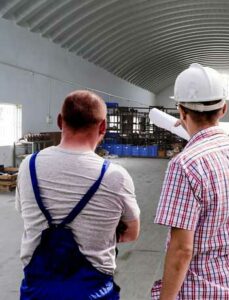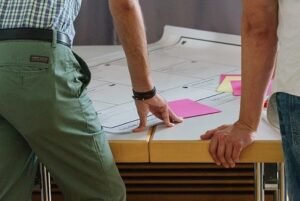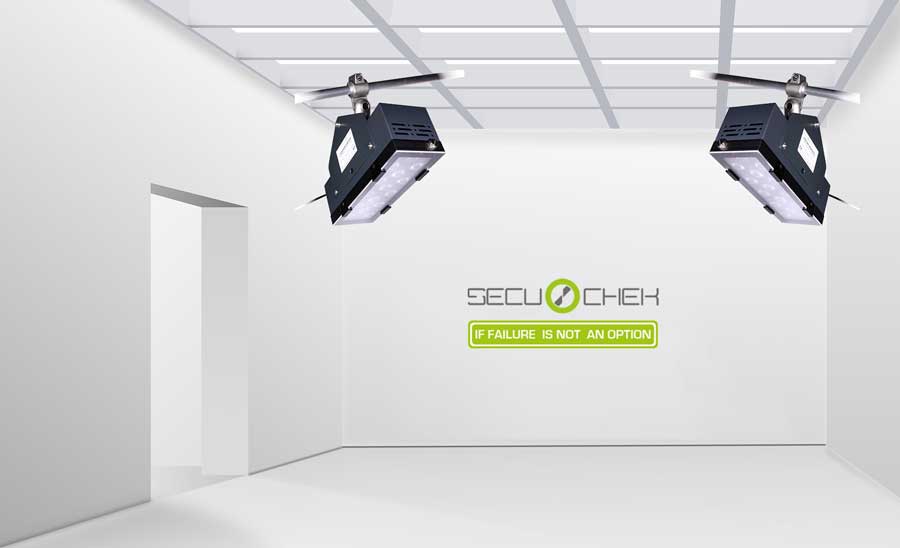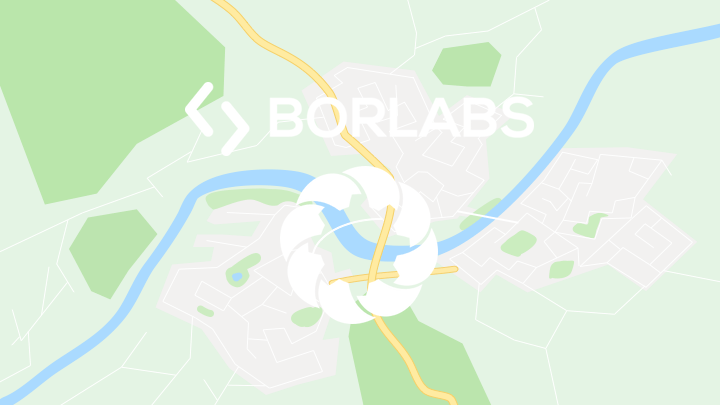
Planning test cabin / systems for colour penetration testing
Test cabin system dye penetrant testing: the setup and construction of a UV test cabin or an entire system for dye penetrant testing is a great challenge, but at the same time a great opportunity. In addition to many details and errors that can be made in the design of a dye penetrant testing system, there are also many opportunities and possibilities to optimize the workflows and processes in the test cabin for visual inspection, but also to plan the entire test system according to the dye penetrant testing process in such a way that one is economically and ecologically optimally adjusted for the future.
In this way, you can cleverly prevent stumbling blocks such as more effort, higher personnel costs, greater energy requirements, etc., if you ask the right questions for the NDT inspection cabinet in advance and also have experienced experts in the company or bring them on board as external consultants.
Before we come to the tips and advice on the optimal planning of an inspection cabin for dye penetrant testing systems, we have compiled frequently asked questions and answers on the topic of dye penetrant testing and color penetration procedures:
What are the test methods?
In industrial material testing test methods, a general distinction is made between destructive material testing and non-destructive material testing (NDT). As a secondary discipline, there is also the conditional non-destructive material testing, such as drilling resistance measurement or hardness testing.
Destructive material testing and non-destructive material testing each include different methods that can be classified into mechanical, chemical, thermal, magnetic, electrical, electromagnetic and optical methods.
The most widely used methods of non-destructive material testing are PT Penetrant Testing, Magnetic Particle Testing (MT Magnetic Testing), Ultrasonic Testing (UT). Examples of destructive material testing are the weld-bending test, blue break test, tensile test or the firing test, to name but a few. Further information on the test methods can be found here, or here at Ril-Chemie specifically for devices and tools for the NDT processes.
What is a PT test?
The PT test, also called penetrant test or penetration test, is a process from the non-destructive material test (NDT) to detect externally open surface defects such as cracks, pores, etc. on various materials such as steel, aluminium, copper, plastics, ceramics and many other solids and materials. PT stands for Penetrant Testing. The penetration test uses the penetrant agent, developer and cleaner, whereby there are different methods with certain advantages and disadvantages. In daylight, the so-called color penetration method, also known as red-white crack testing, is used. In the dark or in a darkened evaluation cabin, the fluorescent penetration process is used. Within the test cabin, the fluorescent indentation agent has a much higher contrast in irradiation with UV lamps, so that this process is much more sensitive and is especially used in high-security applications, e.B. aeronautics and space travel or also in the energy sector. (Source: PT penetrant testing)
What does a crack tester do?
A crack tester examines various materials, components and materials for cracks, pores and other defects. He is an expert in the various processes of the NDT (Non-destructive Material Testing), which tests the components to be tested by means of non-destructive testing methods in accordance with the respective norms and standards. Crack testing requires extreme care, structured work and concentration. This is because the so-called 0-error tolerance applies, if the component is 100% tested, this must be correct. Otherwise, serious accidents, etc., can occur, for example in aviation, nuclear power plants and other high-security areas. Due to the various test methods, materials, etc., the profession of crack tester is very varied and can include many further training courses and career opportunities, e.B. as a Level3 examiner. Further information and testimonials on the profession of crack tester can be found here.
What are non-destructive testing methods?
Non-destructive testing methods are processes from the NDT (non-destructive material testing) that test the quality of a test piece or workpiece without harming the test object. The most important non-destructive test methods are penetration testing (dye penetration test, fluorescent penetration test), eddy current testing, magnetic powder testing, radiation testing, ultrasonic testing or visual testing. Visual testing is the simplest method, which is an important basis for the further non-destructive testing methods mentioned above. It always depends heavily on the respective application and its requirements, which test method is used in which specific form. The norms and standards of the NDT also play a role here, which must be adhered to in the crack test, depending on the area of application, e.g. the aviation industry.
SECU-CHEK has specialized in an user-centered approach and offers various innovations and advantages in the SECU-CHEK systems and test cabins for fluorescent penetrant testing and magnetic particle testing
- The UV test cabins are offered with and without air conditioning
- For an optimally quiet working environment, SECU-CHEK also offers UV lights with temperature-controlled fan cooling
- Also in the range for technology-leading NDT processes: sound-insulated and thermally insulated UV test cabins
- Best possible color integration of the NDT evaluation booth into the existing production environment: Outside with the individual corporate identity, inside black and low-reflective for optimal NDT test conditions
1) Predictive planning: What does the dye penetrant testing system have to do?
Think as many thoughts and plans as possible in advance to answer all relevant questions about the successful project implementation for your penetrant line for fluorescent penetrant inspection incl. UV inspection cabinet. In addition to theoretical considerations, practical tests, miniature models, etc. are useful in order to be able to map the later process sequences of the system for dye penetrant testing as precisely as possible and also processes within the evaluation cabin and to draw conclusions from them.
-
Predictive planning: What does the plant have to do for dye penetration testing?
What does the dye penetration test system or test cabin have to do, what throughput must be possible?
- What are the activities performed in the test cabin?
- Which workflows and what space requirements are planned in the dye penetrant test system and the NDT inspection cabin?
- Are there any other requirements due to the activity for the NDT inspection system?
- What are the specific requirements of the respective workstations in the evaluation cabin?
- How must the plant construction as a whole be designed, what does the inspection system have to do?
- Are there any special requirements regarding fire protection and noise protection in the test cabin for NDT?
- What safety and hygiene measures are necessary at the dye penetrant testing facility and the entire production environment/hall?
- Crane/parts logistics: What is the necessary load absorption on the ceilings of the hall so that the components to be tested can be moved with a crane or running cats?
- What thermal insulation is required in the blackout cabin?
- Arrangement of the system for colour penetration testing in the hall? Which connections are necessary from where or which side? How can the inspection cabin be cleverly integrated into the working field of the NDT system?
- Are demolition work or conversions necessary in the hall, which must be planned in advance?
2) Plan the energy consumption of the plants for dye penetration testing ecologically and take them into account from the outset

Energy consumption is a high proportion of operating costs for a color penetration test system. Now plan the NDT dye system and test cabin energy-saving with SECU-CHEK
Colour penetration systems and dark cabins for visual inspection are the same as for many industrial plants: energy consumption during operation accounts for a significant proportion of operating costs.
Experience has shown that around 80 percent of the total cost of a test facility is incurred only after completion, if the costs are considered over the entire lifetime of a system for the dye penetration testing.
For this reason, it makes sense to include the so-called Total Cost of Ownership (TCO) in the planning of the plant for color penetration testing. After all, a supposedly cheap investment in a test cabin or an entire NDT system for the penetration process can turn out to be a real cost driver over time, because the power consumption as well as the ongoing maintenance and maintenance costs as well as the consumables such as fluorescent dye etc. have not been pre-calculated and planned.
Depending on the situation and data material, there are of course also certain limitations, how exactly this TCO analysis can be calculated. For example, it is difficult to predict the future utilization of the system for PT penetrant testing. How many parts of throughput will be worked in the test booth in five years on a daily, per week or per month? Here one should base on the current planning, as realistic as possible, rather conservatively applied figures.
Our tip: Find out about the concrete savings potential sizing energy, consumables, maintenance, etc.
These are the factors that permanently influence the total cost of ownership and thus contribute decisively to the result of the total costs. In order to enable a cost-effective use of UV-LED technology, there is, for example, the so-called ECO-MODE, which not only extends the service life of the UV-LED luminaires, but also actively reduces energy costs by automatically switching off and switching on the UV LEDs. Depending on the dimensioning of the system for crack testing, significant savings potentials are possible, which can be used by choosing the right crack test system and the appropriate state-of-the-art UV-LED lamp systems.
3) Avoid time pressure and plan the investment safely and thoughtfully

Avoid time pressure / Secure the investment and scheduling of your system for the penetration process with UV evaluation cabin
Time pressure is always unfavourable, whether you are planning a complete test bench for the penetration test, “only” the project management for a test cabin or the NDT process is to be improved by consumables such as the type of fluorescent dye. When planning, distinguish between the following basic points:
- organizational, general planning: (planned) Downtime of the production environment in the course of the installation of the test cabin, conversion measures, adaptations of the production infrastructure, installation of hall cranes, etc.
- Direct planning of the investment: Energy efficiency, fire protection, noise protection, hygiene, etc. are important aspects of the planning of a system for colour penetration testing.
Therefore, start planning early, plan enough buffer times for individual steps and actions, and mentally play through worst-case scenarios if something doesn’t work. In the best case, you still have a Plan B in your pocket and can proceed well-thoughtfully even in a stressful situation. Because time pressure is always a bad consultant.
4) Involve employees early in the planning of the Penetrant testing system/Inspection test cabinet

Involve employees early in the planning of the plant for dye penetration testing
In order to ensure that the decision to build a new test facility for the penetration process or a UV test cabin/dark cabin is accepted, employees and managers should be involved in the project at an early stage. The involvement of employees has several decisive advantages in the entire planning and investment process:
- thorough inventory possible
- comprehensive assessment of future measures
- optimal determination of requirements and optimal processes
In this way, you achieve a long-term increase in value creation, because the employees can contribute their experience directly from practice and thus the workflows also correspond to the actual conditions. At the same time, you will not have any discussions afterwards because certain requirements and wishes have not been taken into account. If something was not possible as a feature on the test cabin or the entire systems for dye penetrant testing, this has already been discussed in the planning process, so that all employees will have an understanding through the integration into this process.
5) Consider future developments and future issues when planning the evaluation booth

Realistically implement cost and future planning with SECU-CHEK
When planning and setting up a new PT penetrant testing line and dark cabin, always pursue the goal of securing and increasing the value creation in the company. With this long-term orientation, you will make your investment decision future-proof, even if there are already enough to do with the acute everyday questions about the installation of the NDT testing plant. Meaningful questions of the future could be, for example:
- What growth can be expected in the next few years? Is my system still suitable for dye penetration testing? Does there have to be expansion possibilities for the test cabin?
- Is the location of the dye penetrant test line chosen in such a way that future extensions do not require a general relocation?
- What are the current logistics requirements for the NDT UV testing plant and how will they possibly change as they continue to grow? For example, do I have entrances for ceiling cranes in the test cabin or are they prepared in such a way that I can carry out the part logistics with a crane up to the dark cabin when switching to larger test objects?
- Can I equip the dye color penetration test system with all relevant Industry 4.0 features for NDT (non-destructive testing) now, even if the connections etc. are only used at a later time?
- What possibilities are there to reduce the costs of heating, UV lighting, water disposal, etc. even further in the future? An example is the installation of an activated carbon plant for the water supply as well as the sanitation during the colour penetration process. Plan the appropriate connections now so that you can improve your crack test system in the next expansion step with a well-thought-out water treatment concept and its installation.
6) Avoid costly errors in the planning of the penetrant test system

Avoid costly errors and unnecessary costs with SECU-CHEK through early planning and 2D and 3D modeling.
In plant engineering for dye penetration testing, adapting from theory to practice is just as challenging as in other industries. We therefore recommend providers who use an adequate 2D and 3D visualization during planning. As a customer, you can concentrate on the essentials and do not have to think about 3D in addition. In this way you avoid unnecessary errors and costs, the advantages are obvious:
- Changes to the designs for the test cabin or the entire crack test system can be implemented quickly and with a relatively different effort
- In addition to saving time, you automatically avoid errors that might not occur until the crack test system is installed without 3D modeling.
- with a real spatial representation in 3D for the crack testing system (e.g. with Solidworks), the viewer can freely choose the location and thus receive a plastic, very detailed representation already at the beginning of the design phase
- Different variants of the dye penetrant test system can be examined side by side in comparison and the advantages and disadvantages can be weighed up
- the entire surface and production environment can be visualized to scale and thus the entire area, necessary distances, etc. can be planned appropriately in the 3D model.
Take advantage of the possibilities of modern technology and do not save at the wrong end. Professional suppliers of Penetrant Testing systems and test booths in plant engineering will be able to offer you appropriate service. 3D modeling with CAD is worthwhile, even if non-incurred costs are not directly included in the Total Cost of Ownership (TCO, see above).
7) Consult experienced specialists for the planning and construction of the installation for penetration testing

Experienced partners for the planning and construction of the plant according to the penetration process incl. UV test cabin – SECU-CHEK.
The functionality, efficiency and cost-effectiveness of the system are in the foreground when planning and designing systems for dye penetrant testing as well as test and evaluation booths with UV-LED lighting. The person who is advised by experts with many years of experience in this field has a clear advantage. The team should consist of specialists and generalists:
Specialists: Shine in their niche with in-depth expertise and above-average knowledge
Generalists: have an overview of different areas and know how to combine them skillfully
It is precisely this synthesis of NDT specialists and generalists that will bring the planning and management of the project qualitatively to a new dimension. You will receive expertise in areas of the NDT and the modern world of work that may not yet be or are not very strongly anchored in the company. For example, SECU-CHEK, as a partner for the plant construction of dye penetrant systems and test booths, opens up completely new possibilities for you in many ways:
- Increase productivity: How can the working space in the test cabin be used optimally? How can the NDT plant architecture optimize the test processes?
- Price/performance: with which state-of-the-art technology in the field of plant construction and UV LED lighting can you get the most out of your budget?
- Automation: based on the test process and the individual requirements for dye penetrant testing, what automation options can be implemented in the NDT test system?
- Industry 4.0: which hardware and software solutions need to be integrated into the crack test facility and test cabin to enable seamless data mining and real-time controlling with the existing business process IT landscape, etc.
So think one step ahead and look for a collaboration partner that combines the relevant disciplines such as NDT (Non-destructive testing), UV-LED technology, process optimization under one roof.
8) Consciously opt for individual award or a holistic system provider

SECU-CHEK is your system provider for holistic solutions for dye penetrant testing systems incl. UV test cabin
The planning, conception and construction as well as installation of an industrial plant for colour penetration testing is an extensive project. A general question should be carefully considered and answered for you in the company:
- Individual assignment: Commission individual components with personal contribution?
- Or award the project turnkey to the specialized system provider for NDT systems?
These questions generally arise in all industrial plants and it always depends on the situation, which is the appropriate way. The following questions will help you to make a decision for individual allocation of a crack test plant or award as an overall project:
- How much experience do you have with the procurement and purchase of individual industrial components?
- Who takes care of the coordination of the individual providers in the construction and integration into the NDT system?
- Are the responsible employees up-to-date with the qualification and have an overview of innovations and new solutions?
- Who is responsible for coordination and cost control in the company?
- Who is responsible for the qualification and compliance of all standards and standards in the company?
- How are defects handled, who is responsible for the timely completion of the project?
- Can you quickly get into unfamiliar areas in order to realize more efficient and productive processes with the new test facility?
- What additional time quotas are necessary for the project “Test Cabin” or “Color Penetration Test System”, which must be blocked realistically by the corresponding employees? Can the day-to-day operation and tasks of these employees still continue without disruption?
Especially in the field of fluorescent penetration testing, we know from experience that the devil is in the detail:Different test parts, the fluorescence concentration as well as the selection of fluorescent dyes, the seamless interaction of the individual components, etc. result in an almost infinite variety of variations, which in most cases can only be mastered by an experienced team of experts.
If you value adherence to deadlines, comprehensive advice, innovative technologies, transparent costs and leading process consulting for non-destructive material testing for your NDT project for the test cabin or the entire penetrant testing system, we recommend working with a system provider such as SECU-CHEK.
From the idea to the turnkey handover

Conception, installation and commissioning of your dye penetration test system as well as UV test cabin from a single source. Planning reliability and guaranteed practicality of your crack test system with SECU-CHEK.
This is custom heading element
We look forward to your inquiry!
You are also welcome to contact us by phone or email.
Direct contact:
SECU-CHEK GmbH
An der Fähre 9
66271 Kleinblittersdorf
GERMANY
Phone +49 6805-942859-0
Fax +49 6805-942859-95
Email: info@secu-chek.de







